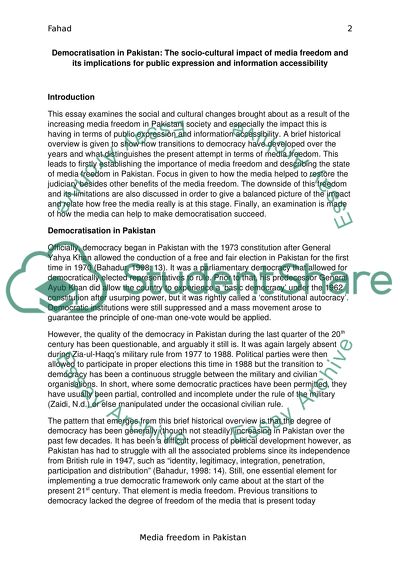Cite this document
(“The Socio-cultural Impact of Media Freedom in Pakistan and Its Term Paper”, n.d.)
Retrieved from https://studentshare.org/social-science/1420761-the-socio-cultural-impact-of-media-freedom-in
Retrieved from https://studentshare.org/social-science/1420761-the-socio-cultural-impact-of-media-freedom-in
(The Socio-Cultural Impact of Media Freedom in Pakistan and Its Term Paper)
https://studentshare.org/social-science/1420761-the-socio-cultural-impact-of-media-freedom-in.
https://studentshare.org/social-science/1420761-the-socio-cultural-impact-of-media-freedom-in.
“The Socio-Cultural Impact of Media Freedom in Pakistan and Its Term Paper”, n.d. https://studentshare.org/social-science/1420761-the-socio-cultural-impact-of-media-freedom-in.


